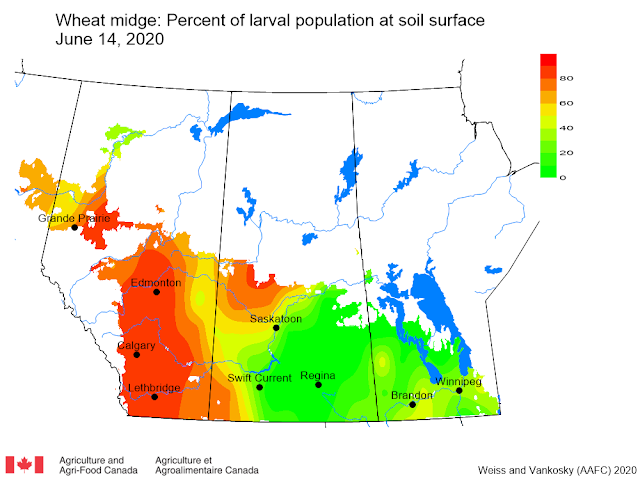a. Delayed adult emergence and oviposition
b. Reduced numbers of adults and eggs
As of June 14, 2020, wheat midge model runs indicate that recent rainfall in Alberta and the Parkland region of Saskatchewan has resulted in movement of more than 80% of the larval population to the soil surface. Dryer conditions in other parts of Saskatchewan and in Manitoba continue to delay movement of larvae to the soil surface. If dry conditions persist, this may result in delayed pupation and adult emergence.
 |
| Figure 1. Predicted percent of larval population of wheat midge (Sitodiplosis mosellana) at soil surface across the Canadian prairies (as of June 14, 2020). |
Information related to wheat midge biology and monitoring can be accessed by linking to your provincial fact sheet (Saskatchewan Agriculture or Alberta Agriculture & Forestry). A review of wheat midge on the Canadian prairies was published by Elliott, Olfert, and Hartley in 2011.
Alberta Agriculture and Forestry has a YouTube video describing in-field monitoring for wheat midge.
More information about Wheat midge can be found by accessing the pages from the new "Field Crop and Forage Pests and their Natural Enemies in Western Canada: Identification and Field Guide". View ONLY the Wheat midge pages but remember the guide is available as a free downloadable document as both an English-enhanced or French-enhanced version.